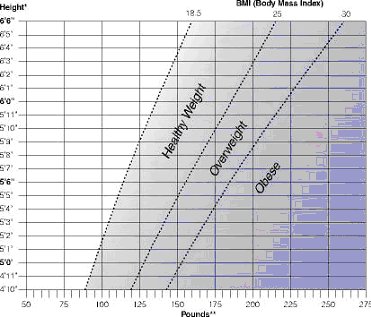Obesity/Overweight
Body Mass Index (BMI) is a way to characterize your heighta and weight stand with regard to normal values, and can be used to determine whether you are underweight, at a healthy weight, overweight, or obese.
A BMI at or above 25 is a risk factor for obesity related conditions:
- arthritis
- back pain
- cardiorespiratory disease
- diabetes, type II
- dyslipidemia (abnormal fats in bloodstream, leading to clogged arteries)
- sleep apnea (trouble breathing while sleeping)
- some types of cancer
and increased risks for any potential surgical intervention:
- difficulties with anesthesia/intubation (putting in the breathing tube)/ventilation (mechanical breathing)
- increased risk of pressure sores and muscle damage
- higher risk of infections, wound problems, hardware (if implanted) failure, and other complications
BMI Categories:
Underweight = <18.5
Normal weight = 18.5–24.9
Overweight = 25–29.9
Obesity = BMI of 30 or greater
A BMI below 18 increases your risk for osteoporosis.
The BMI can be calculated via this link.
On certain occasions, when all non-surgical methods of weight loss have been tried without success, surgical consultations are needed, such as lap band surgery.

